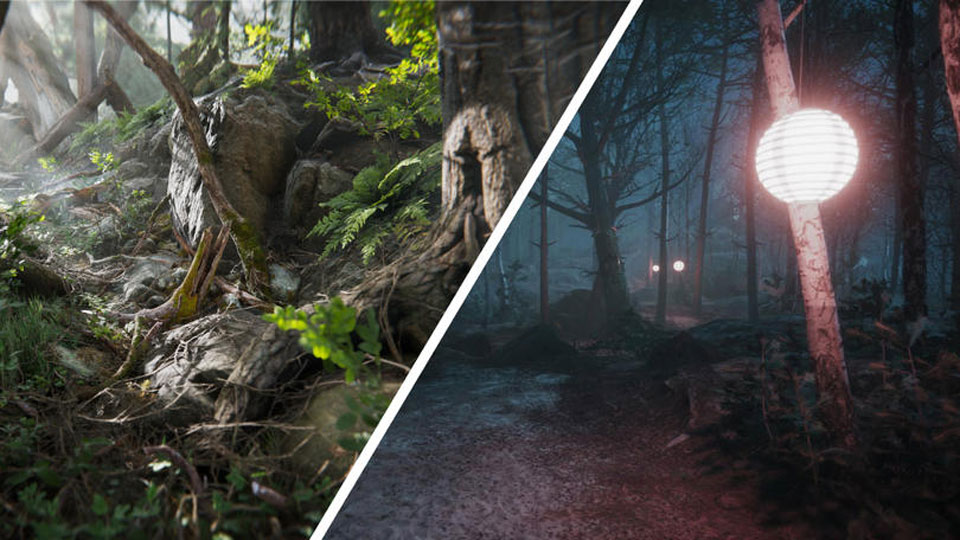The Difference Between Arnold Renderer and V-Ray
Nowadays, many people use 3D software to create their VFX works. Using a render engine is extremely essential and is becoming more and more popular. Depending on the specific project, artists will balance and choose the most suitable render engine for the project. The principle of these renderers is basically the same, but the method of operation is somewhat different.
So, in this blog today, let’s learn the difference between Arnold Renderer and V-Ray with iRender!
What is Arnold Renderer?
Autodesk Arnold 2025 (Image Source: Autodesk)
Arnold is a market-leading ray-tracing 3D renderer co-developed by Solid Angle and Sony Pictures Imageworks. It is widely used in the entertainment industry, with over 300 studios worldwide. It can be used independently or can be used with almost any 3D software package, including Maya, 3ds Max, Houdini, Cinema 4D, and Katana. It is also integrated into Maya and 3DS Max.
Arnold is used to render 3D computer-generated scenes using physically-based, unbiased Monte Carlo path tracing techniques for animation and visual effects in movies and entertainment. It is one of the most popular render engines in the industry.
Despite its complexity, Arnold is easier to use than other render engines. The controls are simple and well-organized, so a newbie won’t have too much trouble using the software. It can handle enormous data sets with ease, preventing PCs from crashing during rendering.
What is V-Ray?
V-Ray is another popular rendering software commonly used in industries such as architecture, interior design, product visualization, and visual effects. V-Ray Renderer has focused on interior design and outdoor design for 20 years. It is known for its ability to create photorealistic images with advanced lighting and shading capabilities. Developed by Chaos Group, V-Ray offers a wide range of features including global illumination, ray tracing, and accurate camera effects. It is highly versatile and widely used by professionals to achieve realistic renderings in various design projects.
About disadvantages, probably because V-Ray has too many configuration options, material adjustment, and lighting performance are extremely tough, making it unsuitable for newbies!
The Difference between Arnold Renderer and V-ray
Interface
V-ray’s interface is more organized, with tools and features easily accessible through toolbars. However, you may need to search within these toolbars to find exactly what tools you need.
Arnold, on the other hand, has a more complicated interface with a wide variety of capabilities that may initially confuse users. However, with familiarity, it proves to be straightforward and user-friendly. Moreover, you can also switch between CPU and GPU rendering with the click of a button and never have to worry about adjusting settings. For such a powerful rendering engine, Arnold is surprisingly user-friendly.
Speed
Rendering speed is one of the most important factors to consider when selecting the best render engine.
V-ray renders fast in bias mode, handling large amounts of data without missing a beat. Because it includes a wide range of manual settings, the rendering speed is faster than that of other renderers. However, Arnold is just as fast and efficient.
Arnold, on the other hand, uses biased-based rendering, which allows designers to focus on designing great graphics rather than getting bogged down in settings. It’s quick, dependable, and efficient, and while V-ray may have the advantage in terms of rendering speed, Arnold excels at generating superior lighting outputs via path tracing. Path tracing provides the best lighting results, and the effects are replicated from render to render.
Real- Time Rendering
Both Arnold and V-ray provide real-time rendering updates, allowing designers to see lighting and texturing effects without having to wait for a long time to see the final result.
Arnold introduced the possibility to use GPU rendering. The software has an interactive preview area (IPR) that displays how your produced scene appears in real-time. As you change the scene, the IPR updates the preview almost immediately. V-ray includes a viewport called V-ray RT that provides virtually real-time feedback on a changing scene. With V-Ray RT, you can change the lighting, objects, materials, or camera, and the changes will be seen in the viewport.
Vray is user-friendly and suitable for indie artists and beginners working on small projects. It’s simple to learn, and the results are just amazing. Arnold is easy to use and provides a basic experience. However, because it was designed for medium to big VFX productions, it includes a variety of tools and capabilities that may overwhelm someone with no experience.
Wrapping Up
Whether you choose between Vray or Arnold, you should consider based on the nature of the specific project. V-ray will be suitable for architectural and home design projects while Arnold will be suitable for the film and TV industry. You also need to consider render farm to boost your render project without investing much money.
iRender - The Best Render Farm Provides RTX 4090 for Arnold and V-ray Rendering
iRender is proud to be one of the best GPU service providers on the market. You can find a lot of options suitable for your project. iRender offers from 1/2/4/6/8 RTX 4090s and 3090s. In addition to offering powerful configurations, all servers at iRender are also equipped with AMD Ryzen™ Threadripper™ PRO 3955WX @ 3.9 – 4.2GHz or AMD Ryzen™ Threadripper™ PRO 5975WX @ 3.6 – 4.5GHz, 256GB RAM, 2TB Storage NVMe SSD. The high-end configuration is extremely suitable for complex projects.
Let’s see how our RTX4090 performs when rendering with Vray:
The price is very flexible and suitable for projects from small to large. Moreover, iRender always has a 24/7 online Support Team to help you handle problems immediately.
Right now, we have a promotion 100% bonus for the first transaction within 24h since your registration.
Let’s create an ACCOUNT and try our render beast for your Blender projects. For further information, please do not hesitate to reach us at [email protected] or mobile/ WhatsApp: +(84) 916017116, Skype: Lina iRender.
iRender – Happy Rendering!
Reference source: Academy of Animated Art and Renderpool







